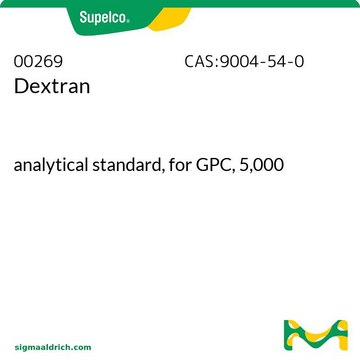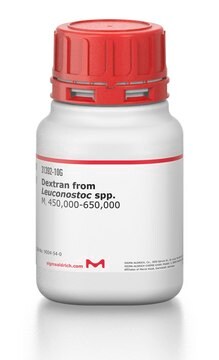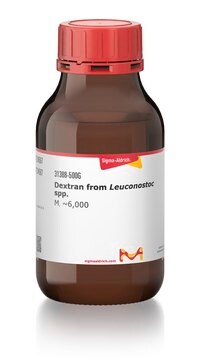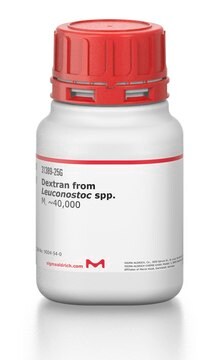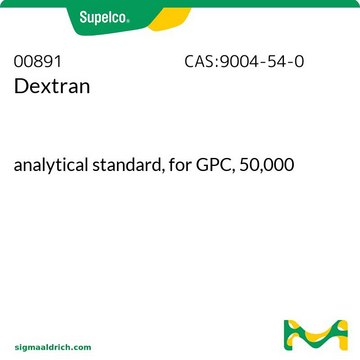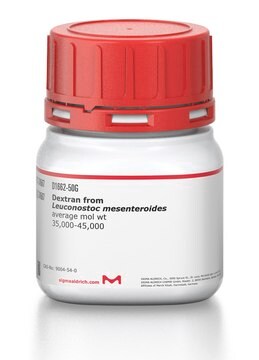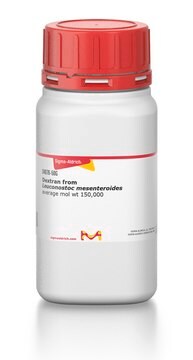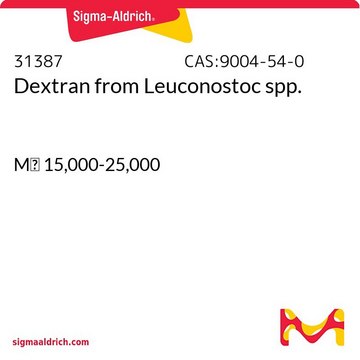31419
Dextran from Leuconostoc mesenteroides
analytical standard, for GPC, Mw 25,000
About This Item
Polecane produkty
klasa czystości
analytical standard
for GPC
Poziom jakości
masa cząsteczkowa
Mn ~20,000
Mp ~20,000
Mw ~25,000
klasy chemiczne analitów
oligosaccharides
metody
gel permeation chromatography (GPC): suitable
Mw/Mn
~1.25
Zastosowanie
food and beverages
Format
neat
InChI
1S/C18H32O16/c19-1-5(21)9(23)10(24)6(22)3-31-17-16(30)14(28)12(26)8(34-17)4-32-18-15(29)13(27)11(25)7(2-20)33-18/h1,5-18,20-30H,2-4H2
Klucz InChI
FZWBNHMXJMCXLU-UHFFFAOYSA-N
Szukasz podobnych produktów? Odwiedź Przewodnik dotyczący porównywania produktów
Powiązane kategorie
Opis ogólny
Dextran from Leuconostoc mesenteroides (Mw: 25,000) may be used as an analytical standard to calibrate the column for gel permeation chromatography (GPC).
Zastosowanie
Kod klasy składowania
11 - Combustible Solids
Klasa zagrożenia wodnego (WGK)
WGK 2
Temperatura zapłonu (°F)
Not applicable
Temperatura zapłonu (°C)
Not applicable
Środki ochrony indywidualnej
Eyeshields, Gloves, type N95 (US)
Wybierz jedną z najnowszych wersji:
Masz już ten produkt?
Dokumenty związane z niedawno zakupionymi produktami zostały zamieszczone w Bibliotece dokumentów.
Klienci oglądali również te produkty
Nasz zespół naukowców ma doświadczenie we wszystkich obszarach badań, w tym w naukach przyrodniczych, materiałoznawstwie, syntezie chemicznej, chromatografii, analityce i wielu innych dziedzinach.
Skontaktuj się z zespołem ds. pomocy technicznej



